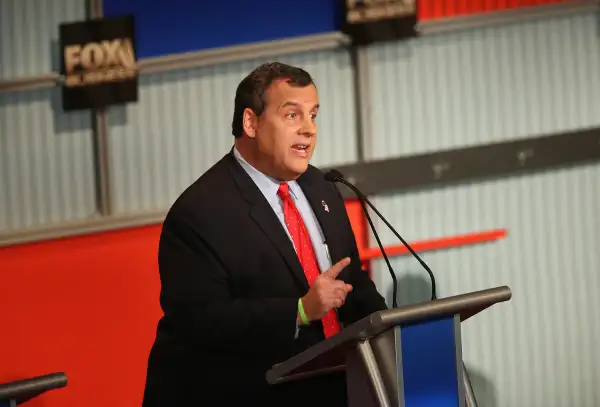Looking for the Angry Guy Vote? Track This Depressing Number

This fall, the U.S. unemployment rate finally hit 5%. It's a psychologically important number, and just a shade above the 4.9% long-term average. The Obama administration and the Democratic nominee will certainly point to it as evidence that they have engineered a recovery from the 2008 crash.
When they do, get ready to hear about the “labor force participation rate.” It’s a number that New Jersey governor Chris Christie has brought up repeatedly in speeches and an influential Wall Street Journal op-ed (subscription required). The participation rate is something that Republicans are likely to use to argue that the Obama economy is weaker than the (falling) unemployment number implies.
The labor force participation rate is a broad measure of the share of working-age Americans who are either employed or actively looking for work. The rate will never be 100% because the population it surveys includes people who have chosen to retire, go to school, or stay home with their kids. But a higher participation rate is better because the non-participating segment includes folks who are on disability and, crucially, those who want to work but are too discouraged to even look for a job.
It's that last group, so-called discouraged workers, that Republicans tend to focus on to explain why the participation rate has refused to improve even as the unemployment rate has steadily dropped. The unemployment rate doesn't count discouraged workers as unemployed; the more broadly defined labor participation rate does.
Christie has said that the labor force participation rate (now at 62.5%) is the lowest “since the Jimmy Carter 1970s.” It’s an effective line, in part because it is true. In some ways, actually, Christie’s line underplays the drop in workforce participation. The 1970s and 80s saw the influx of women into the labor force, raising the overall participation rate. But the labor force participation rate of men is lower now than it has ever been. As Justin Fox has pointed out in Bloomberg View, it now lower even than it is in the U.K. and Germany, battering the image of the U.S. as the hardest working of the Western democracies.
Some of the drop in the labor force comes from longer lifespans, which means more retirees. Not all of it, though. It’s clear that there is a substantial subset of Americans who are not actively looking for work (and thus don’t fall into the unemployment number) but probably would be happy to work if the right jobs were available. For example: Roughly 8.9 million American working-age adults now receive disability benefits, up from 7.8 million at the end of 2009. It’s up from 5 million in the economic boom times of 2000—and most notably, it’s more than double where it was in the recession of the early 1990s. The number of workers on disability has gone up even as the economy has improved.
The labor force participation rate is a particularly compelling number for Republicans because it is lowest across the South, a Republican stronghold. A Money analysis of census data shows 14 states—11 in the Southeast, plus Michigan, New Mexico and Arizona—where more than 1 in 5 men aged 20 to 64 are not in the labor force.
Some of these are in school or are genuinely satisfied not working. Many are not. Whether they are discouraged, on disability, or reluctantly pushed into early retirement, it’s clear that there’s a substantial constituency out there receptive to the message that the economy is in worse shape than you’d guess from the unemployment stats.
This is especially true if you look just at white men, a key Republican constituency. The national unemployment rate for white men is now below 4%, but that really tells only part of the story. According to census data, in many states 15% to 20% of white men in their prime working years are unemployed or not in the labor force; in two states (West Virginia and Kentucky) it's closer to 25%. That's a lot of men who are not working in what should be their prime working years.
A fair number of these men who are no longer in the labor force are arguably worse off than those counted as "unemployed," because they really don't expect to ever have a job. They may not think of themselves (and aren’t counted) as unemployed, but they’re not consistently employed, either. Talk of raising the “participation rate” is really a way of talking about creating an economy in which they can work again.
In 2012, Mitt Romney had little to offer those folks—remember the 47% comment?—and it helped lose him the election. These are men who feel like they’re falling in the world, and they are looking for a candidate who will be there to catch them.
